Introduction:
Lai Haraoba is the primary and most important ritual observance of the Meiteis, who have settled down over the fertile valley of about 700 square miles of Manipur. At a time when Hinduism has struck its roots deeply into the life of the Meiteis, the Lai Haraoba is still popular because of its ritualistic embodiment of the life of the primitive Meiteis, entirely outside the Hindu framework.
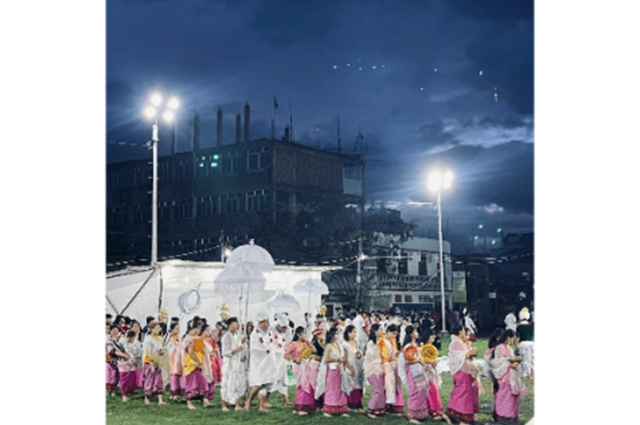
Meaning/Etymology:
The words ‘lai' and ‘haraoba' mean God and pleasing, respectively. Taken together, it can be interpreted as ‘pleasing of the Gods’. However, different scholars in different periods of time have given distinct interpretations. T.C. Hudson, the writer of the book called ‘The Meitheis' (1910) refers to lai haraoba as meaning ‘rejoicing of the gods.’ E. Nilakanta Singh, a Manipuri scholar, has used the word to mean ‘merry-making of the gods and goddesses.’
The Manipuri pundits interpret Lai Haraoba in a completely different way. They argue that the term Lai Haraoba is derived from Lai hoi-labor, which means shouting of hoi by Lai. Hoi is a monosyllabic sound associated with many rituals and legends of Manipur.
Whatever may be the interpretation, the basic idea remains that it is the most important ritual connected with the Meiteis.
Origins:
Lai Haraoba has its origin in the tradition of ancestor worship followed by the Meiteis. It is a ritual performed by the Meiteis with the belief that they could ensure a normal social existence by maintaining continuously a process of productive relationship between man and nature, man and supernatural forces, and among the various dimensions of time in the life of the community.
It is a fertility rite through which the primitive Meiteis sought the favor of local gods and goddesses to promote biological creativity in the community. They thought that a successful observance of this ritual could lead to fertility in the life of man, and animals, and to a good harvest. They also believed that the ritual could bring about a healthy communal life free from disease, epidemics, and atrocities of war and wild animals.
Nongthombam Premchand compares this ritual with the ancient Greeks organizing the Dionysiac festivals to please Dionysus and the gods and goddesses of the Greek pantheon.
Gods and Goddesses:
In every Lai Haraoba, there will be two brass masks, representing two presiding deities the Lainingthou and Lairembi installed on a pedestal kept in a building which is called laishang. The whole performance is organized in front of these two icons. Nine other important gods Laibungthous and seven principal goddesses known as Lainuras are supposed to be present in Lai Haraoba.
The supreme father of gods called Atiya Sidaba is also supposed to grace the function with his presence. Then, the guardian deities of the four directions- Thangjing (south-west), Marjing (north-east), Koubru (north-west), and Wangbren (south-east) are also supposed to be present in their respective places around the area of performance called laibung.
Season of Lai Haraoba:
"The Lai Haraoba is held annually in or near May just as the rains are beginning and when the country is donning its new verdant dress, frogs chanting in the evenings, dark blue rain clouds rolling over from the West, monsoon sunsets illuminating the skies, yellow sunlit bamboo, and birds perched high aloft trilling in insistent happiness. At this time, if we trace the sound of the gently murmuring pena instruments to its source, we may come to an open square among the cottages, with a tiny one-room temple at its edge. This is the place where the Lai Haraoba will be performed."
- Miss Louise Lightwood who was fascinated by the scenic beauty of Manipur valley during the season of Lai Haraoba in the early 1950s described it in beautiful poetic words.
Lai Haraoba is generally performed in the summer season, before the arrival of the rainy season when the people start going to the fields. During this period, the Manipur valley reverberates with the sound of festivities connected with Lai Haraoba performed in different parts of the valley. Normally, the performance will last for one day three days five days or seven days, etc. The propitious days for the beginning and the ending of a Lai Haraoba are decided by the maibas and pundits who belong to a department of experienced and erudite scholars called the Pundit Loishang. In the case of Lai Haraoba performed for the deity of Thangjing at Moirang (the place in Manipur where Loktak Lake is situated), the performance continues even for a month.
Maibi, Maiba, and Penakhongba:
The ritual performances of Lai Haraoba are always conducted with the help of three ritual functionaries called maibi, maiba, and penakhongba.
Maibi-
Maibi is the most important of the three ritual functionaries. In addition to making ritual offerings and looking after the details of the whole performance, the maibi sings, dances, and enacts various episodes taken from myths and legends. The role of the maibi is the medium through which attempts are made to bring about a link between the natural and supernatural orders of life.
The Meitei society has nupa maibi (male transvestite performing the duty of maibi) also. This shows that maybe is essentially a medium and that sex has nothing to do with this.
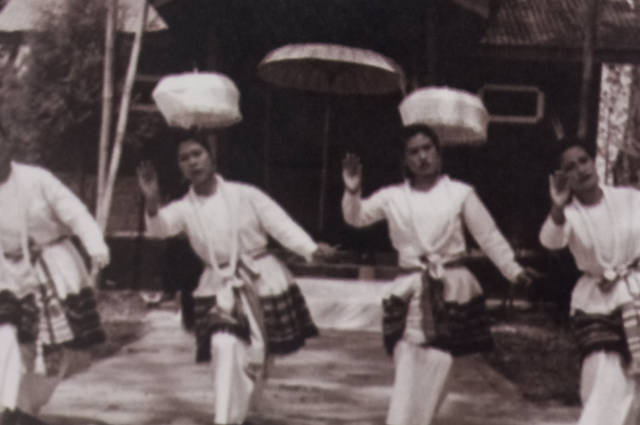
Maiba-
The maiba is another important ritual functionary playing an important role in Lai Haraoba. He performs such important ritual acts as Konyai Thaba and Khayom Lakpa. He organizes and takes part in Hoi Laoba, Ougri Hangel, and Lauren Mathek, which are important ritual sequences of Lai Haraoba. Though he is not as important as a maibi, the role of a maiba in Lai Haraoba cannot be underestimated.
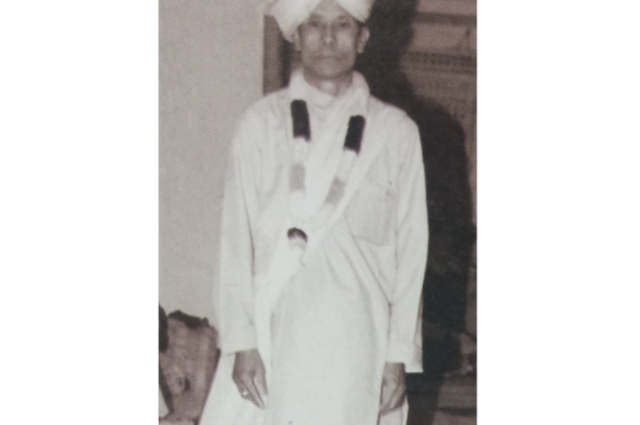
Penakhongba-
The third ritual functionary is an artiste playing on pena, an old indigenous musical instrument of Manipur. He is popularly known as penakhongba, who’s not a mere instrumentalist, but a singer and dancer also.
The Pena music has a distinct tonal system that expresses different moods and is prescribed for specific sequences in Lai Haraoba.
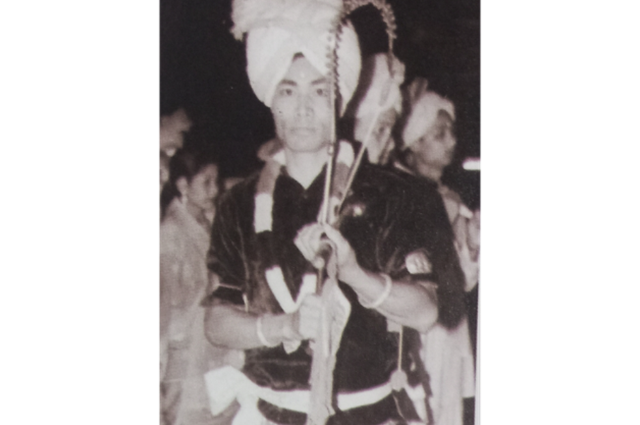
Stages of Lai Haraoba:
1) Lai Ekouba-
Lai ekouba means calling up the Lai from the water. This introductory ritual which is performed one day before the commencement of the main daily rituals marks the beginning of the Lai Haraoba.
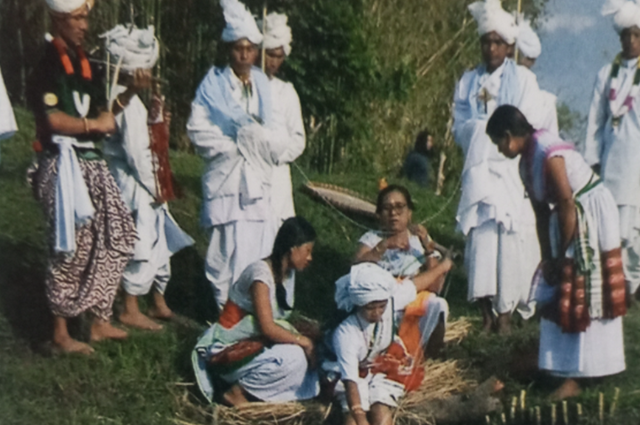
2) Laipou-
Laipou is an important ritual in which the maybe and the other performers or participants will enact the whole process of life on the earth, starting from the mystery of sexual union to the routine of the humdrum existence of men and women.
3) Kanglei Thokpa-
Kanglei Thokpa is a trance enactment of a mythical story. According to this mythical story, a mythical hero called Khoriphaba, an expert in signal kangjei (polo) and Indigenous wrestling known as mukna was not allowed to take part in a Lai Haraoba performed by the gods and goddesses because he was still a bachelor. Thus, khoriphaba had to look for a bride.
In this ritual item, the maibi will take the role of khoriphaba and mine the action of khoriphaba as a polo player and a wrestler.
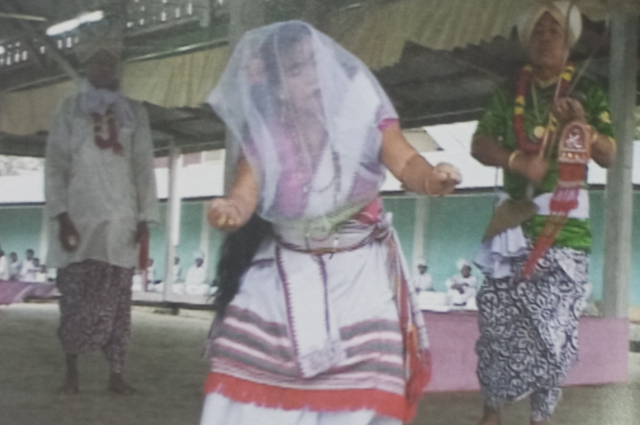
4) Lairoi-
Lairoi is the final ritual performance of lai haraoba. On this last day of Lai Haraoba, some important items like louyanba, ougri, hijan hirao, etc are performed.
Louyanba is an interesting ritual drama enacting the mythical story of two mythical lovers Nongpok ningthou and Panthoibi. The maibi will play the role of Nurabi, who is Panthoibi, and the penakhongba will play the role of Nongpok ningthou.
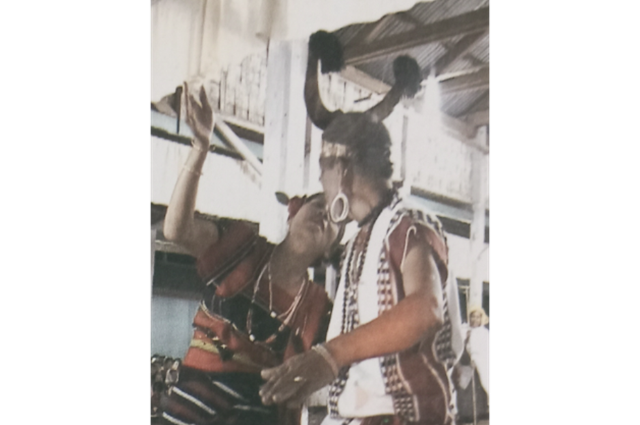
Conclusion:
Lai Haraoba has left an ever lasing impression in the social, cultural, and religious spheres in the lives of the Meiteis. Its organizational pattern and modes of performance have been deeply instrumental in the definition of the identity of the Meiteis and their forms of expression like dance, music, theatre, etc.
. . .
